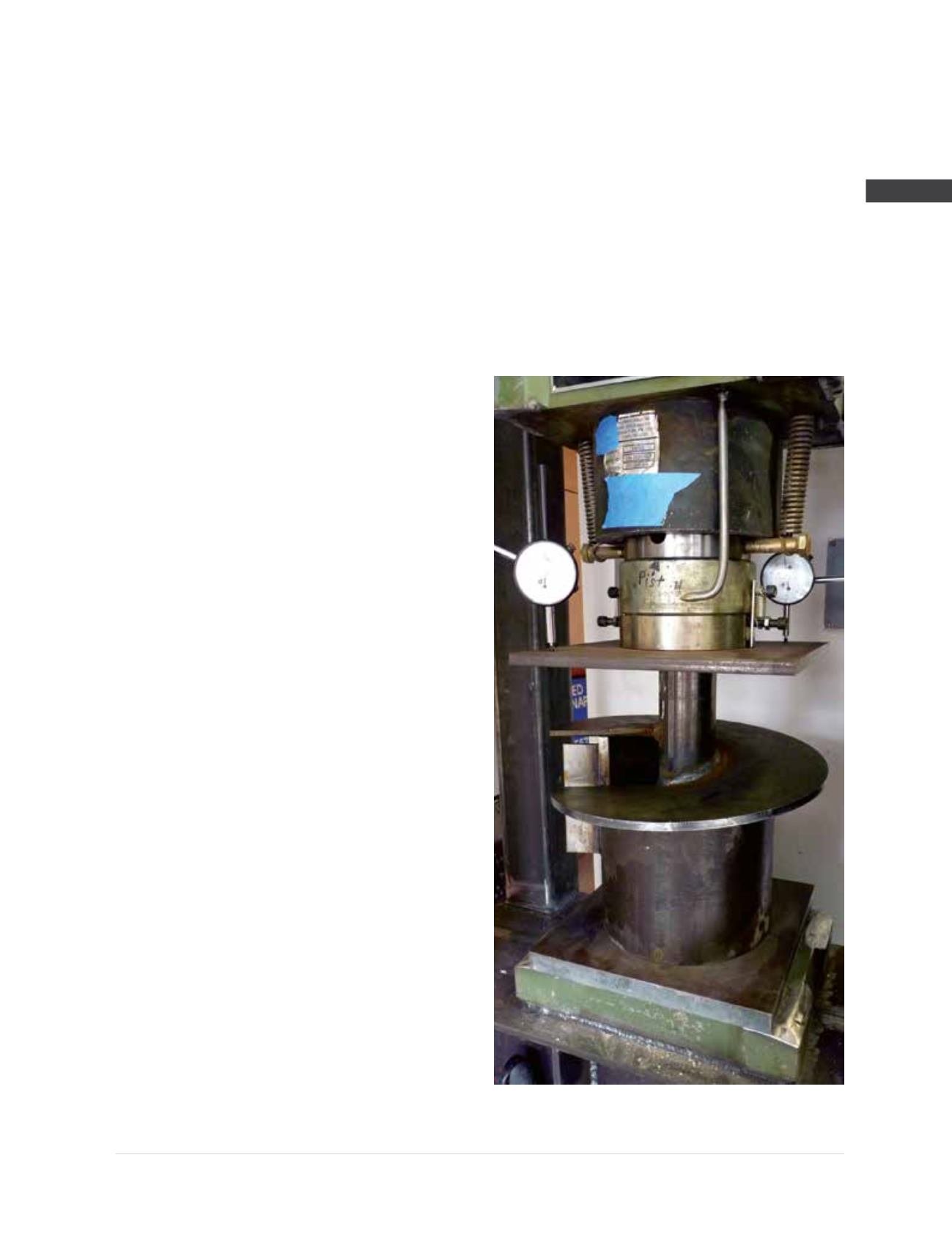

© 2014 Foundation Supportworks
®
,
Inc.
All Rights Reserved
p 109
APPENDIX 2A
HELICAL PRODUCT RATINGS, PROPERTIES AND DETAILS
Chapter 2
Helical Foundation Systems
Helix Plate Capacities
The capacity of an individual helix plate is
determined through laboratory testing in
accordance with Section 4.3 of ICC-ES AC358.
This test is completed by placing a short section
of shaft with a single helix plate in a laboratory load
frame or universal machine. The helix plate bears on
a helix-shaped fixture or on an adjustable mandrill
with five or more pins. The line of bearing varies and
is pre-determined for each helix plate and pile shaft
combination. Load is applied to be coaxial with the
longitudinal axis of the pile shaft and normal to the
bearing surface of the helix plate.
Foundation Supportworks
®
completed helix
capacity testing for several pile shaft/helix plate
configurations in accordance with AC358
(See
Figure 2A.1)
. HP288 and HP350 shafts were tested
with 8, 10, 12 and 14-inch diameter helix plates.
The helix plates were
3/8
-inch thick Grade 50 (50
ksi min. yield) steel. Load was applied until (1) the
test sample refused any additional load by reaching
a failure mechanism such as weld shear, plate
bending, or shaft buckling, or (2) a practical, usable
resistance was exceeded. Test results (ultimate helix
plate capacities) ranged from 101 kips to 200 kips,
with most tests being terminated at loads of 140
kips (HP288) or 200 kips (HP350) since these values
greatly exceed a practical usable pile capacity.
Considering even the lowest atypical test result,
the allowable individual helix plate capacity for both
shafts and all plate diameters would exceed 41 kips
with a factor of safety of 2.0 and a scaling factor to
normalize for 50 years of plain steel corrosion.
An allowable individual helix plate capacity of 41
kips will rarely be approached in practice since
most heavily-loaded applications will include pile
designs with multiple helix plates. Exceptions
could be installations in hard clay, dense granular
soils or bedrock, where
½
-inch thick helix plates
would then likely be considered to increase
individual plate capacities and minimize plate
deflections under load. In most soil conditions,
the torque-correlated allowable soil capacity will
limit the working load distributed to each helix
plate to much less than 41 kips. Even in light load
applications, multi-helix pile configurations are
commonly utilized to increase bearing area, lower
contact pressures within the soil, and minimize
pile deflections due to soil deformation. Multi-
helix pile configurations are also typically easier to
install due to the downward thrust provided by the
additional helix plates. For additional discussion
about helix plates see Section 2.3.1 of this manual.
Figure 2A.1
Helix capacity testing of HP288
with 14-inch diameter helix plate












